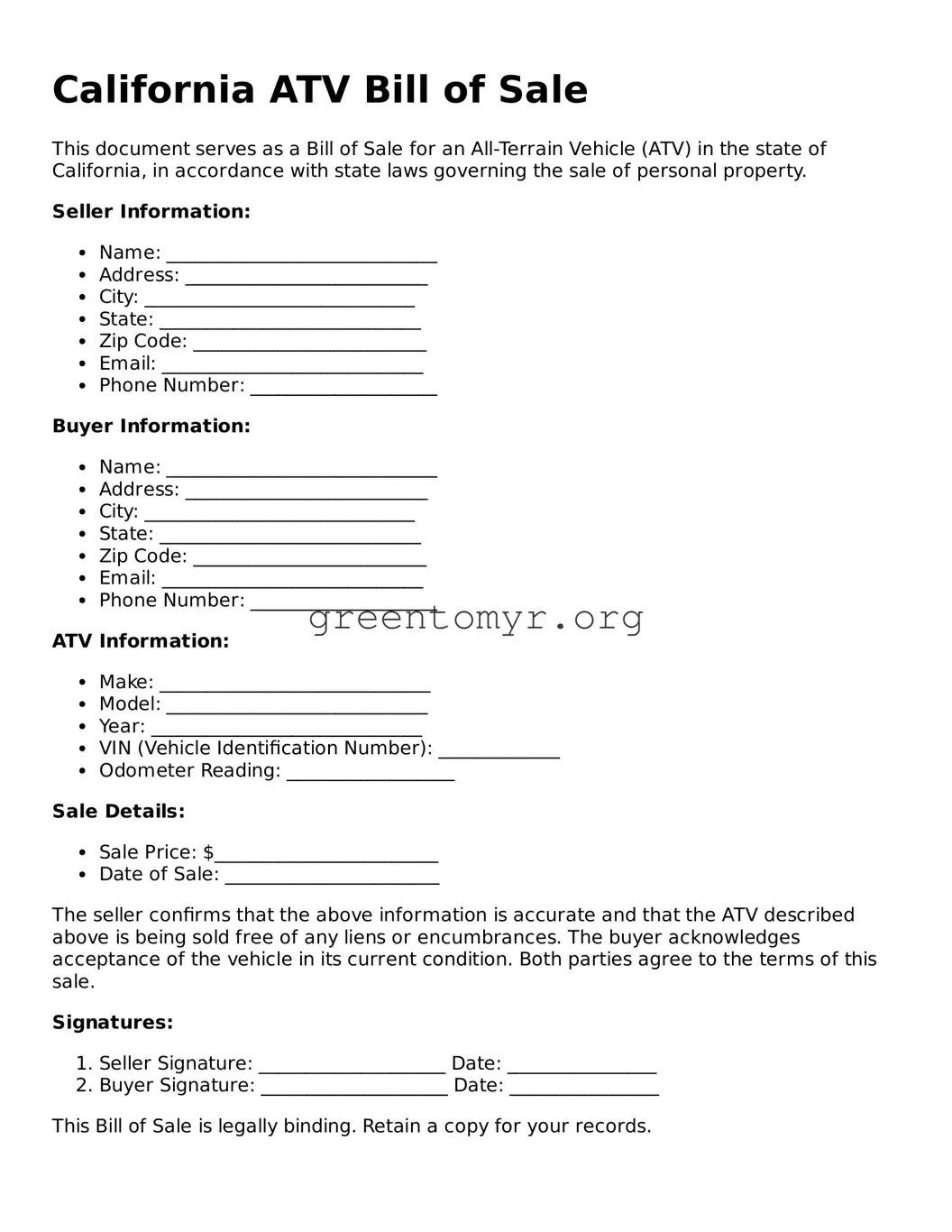When purchasing or selling an all-terrain vehicle (ATV) in California, having a properly executed Bill of Sale is essential to ensure a smooth transaction and protect the interests of both parties involved. This document serves as a legal record that outlines the details of the sale, including the names and addresses of the buyer and seller, a thorough description of the ATV, and the agreed-upon sale price. Additionally, it may detail any relevant terms, such as the condition of the vehicle and any warranties or disclaimers. Completing this form accurately can prevent disputes in the future and provides the buyer with proof of ownership. Furthermore, a properly filled-out Bill of Sale is often necessary for registration and title transfer processes with the Department of Motor Vehicles (DMV). Sellers can also benefit by documenting the transfer of ownership, protecting them from potential liabilities after the sale. In a state like California, where ATV activities are popular, understanding the importance and requirements of the Bill of Sale is critical to a successful transaction. Act swiftly to secure your interests and adhere to regulatory compliance by utilizing this vital document.
